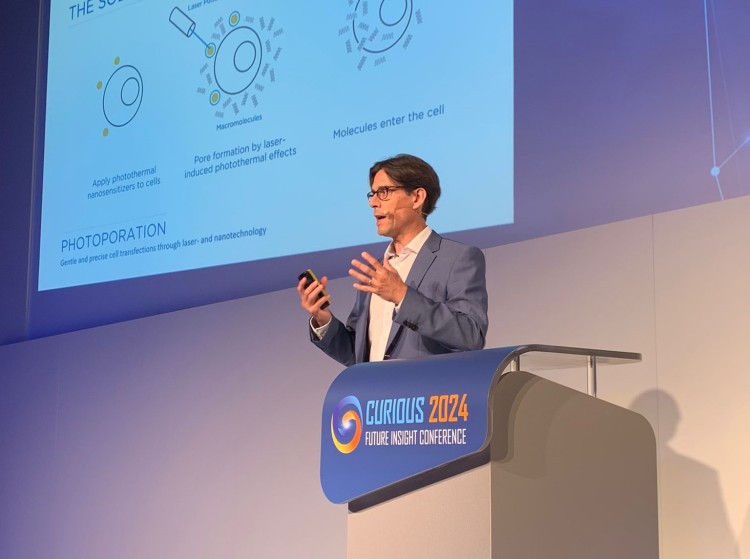Ghent University spin-off Trince wins Nature Spinoff Prize
Trince, an innovative spin-off from Ghent University, wins the global Spinoff Prize from the scientific journal Nature. In the final on 11 July in Mainz, Germany, Trince beat two American and one British opponent.
With the award, the world-renowned journal aims to highlight spin-offs that translate original and excellent research in the life sciences or physical sciences into practical applications with added value for society.
"We are extremely honored and proud to win the Nature Spinoff Prize," says Prof. Kevin Braeckmans of the faculty of Pharmaceutical sciences, who is Chief Scientific Officer of Trince. "This recognition underscores our team's groundbreaking work in cell therapy and genetic engineering. This prize also opens the doors to the international market, where we want to roll out our research and technology further. We are very much looking forward to strengthening the positive impact of our technology on healthcare worldwide."
Laser light as perforator
Trince was founded only three years ago and is built on the research of Prof Kevin Braeckmans and his biophotonics research group (Faculty of Pharmaceutical Sciences). The name of the spin-off stands for TRansfer INto CElls and refers to the company's activity: developing devices that allow molecules, such as DNA fragments, to be inserted into cells. Those devices use photoporation, a technique developed by Braeckmans that uses laser light and nanoparticles to create temporary openings in cells.
Immunotherapy
Among other things, the technique enables the genetic manipulation of immune cells from the blood of cancer patients. These cells are modified to fight cancer cells after reintroduction into the patient's body. Genetic modification of stem cells and live imaging of cells are also among the possible applications.
Fast and gentle
Toestel TrinceIn photoporation, cells are first mixed with so-called photothermal nanoparticles, which are then very briefly irradiated with laser light. The nanoparticles briefly heat up strongly due to the irradiation (hence 'photothermal'), creating temporary pores in the cells' membrane through which molecules can enter the cells. The main advantage of this approach is that it causes little or no internal damage to the cell, unlike current techniques such as electroporation. This allows the treated cells to divide in large numbers and soon after treatment, something that is very important in immunotherapy, for example, where every day counts.

Kevin Braeckmans
